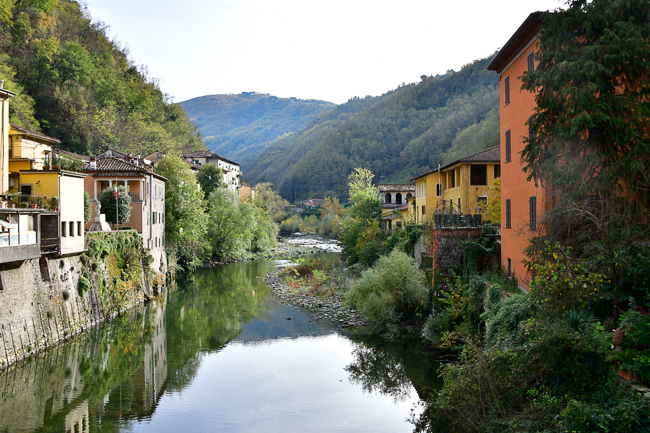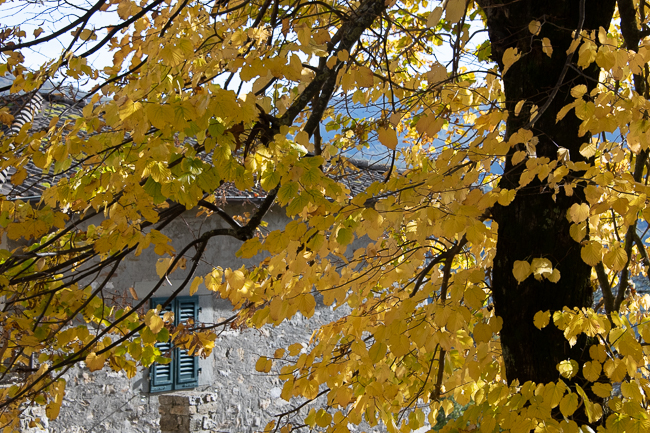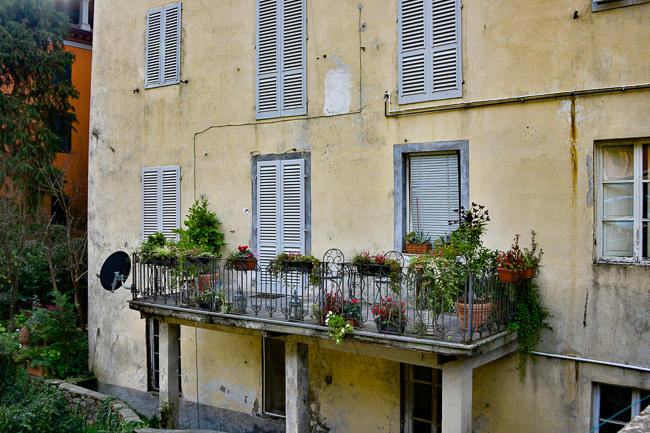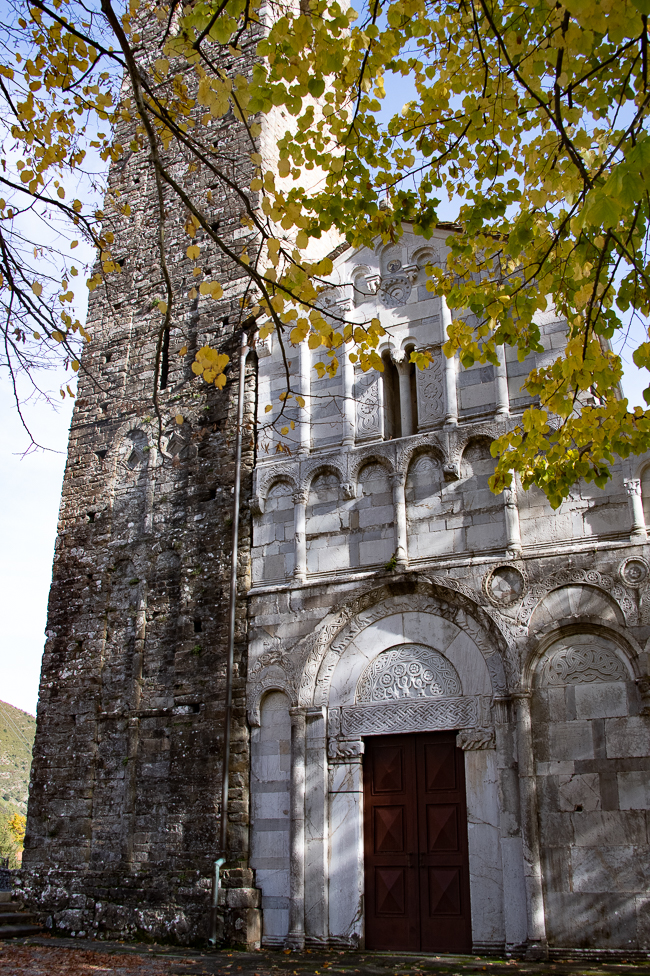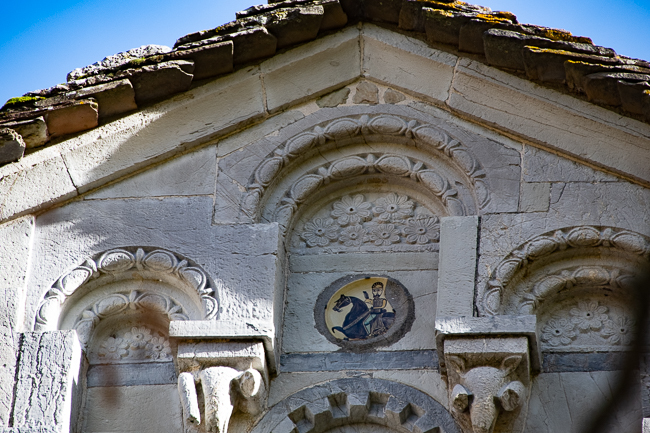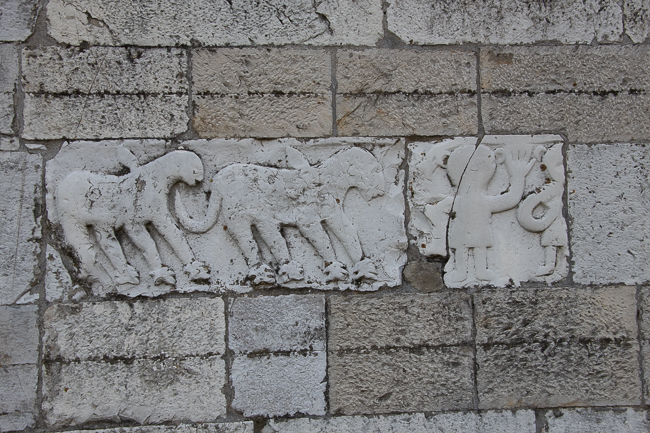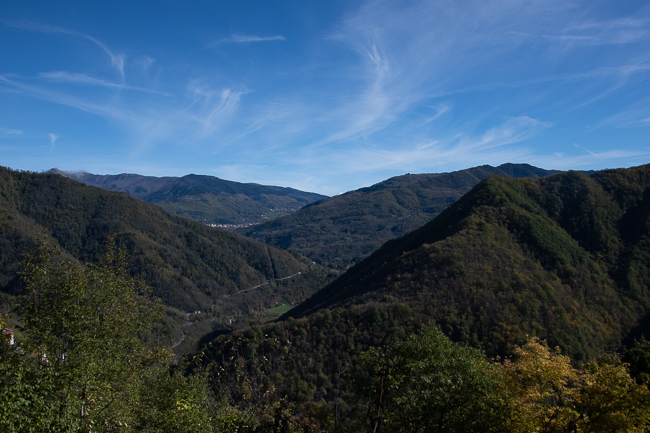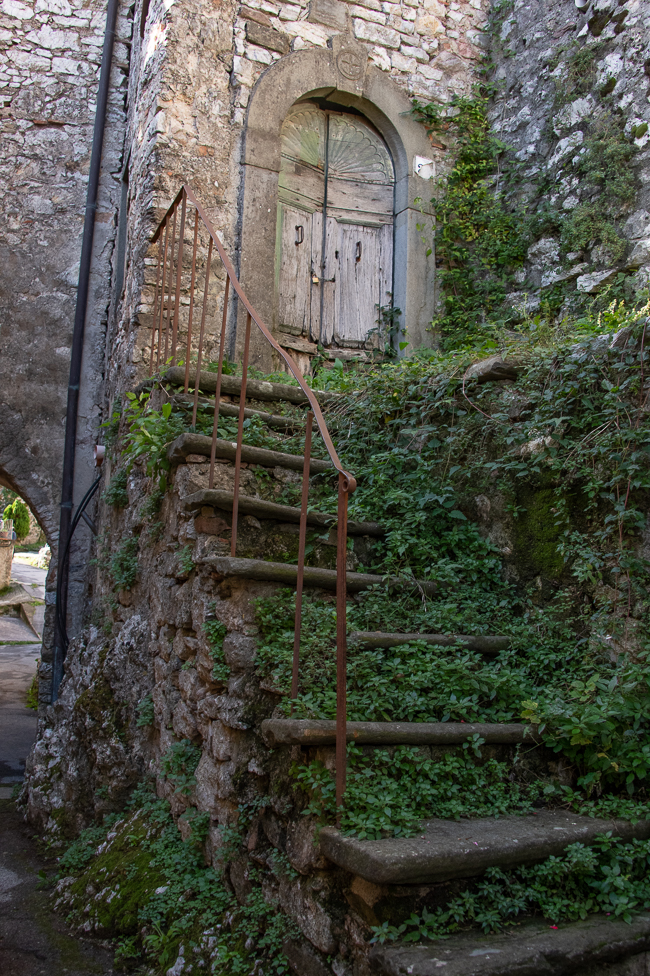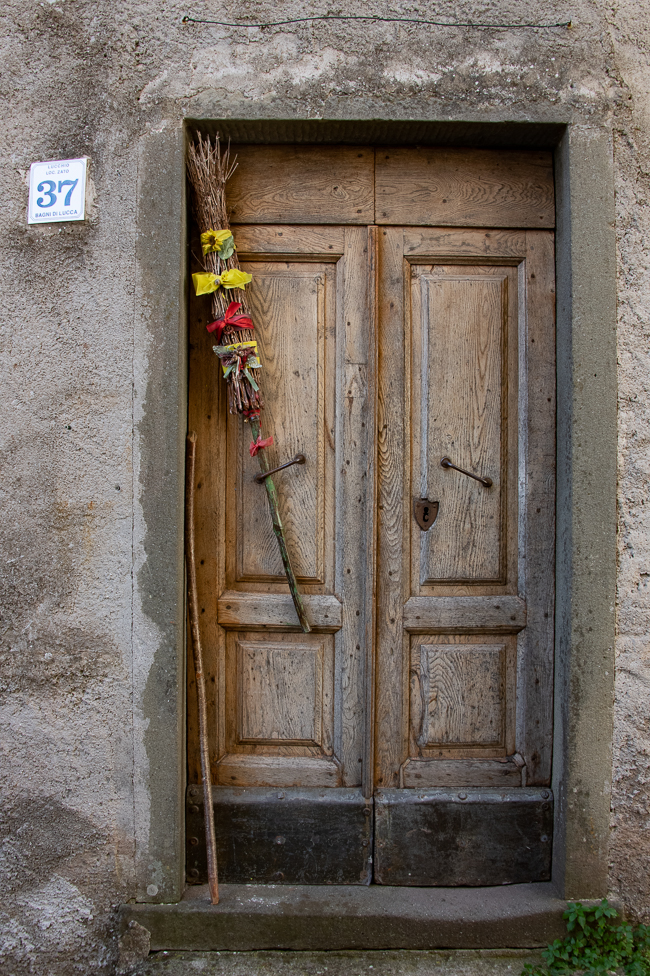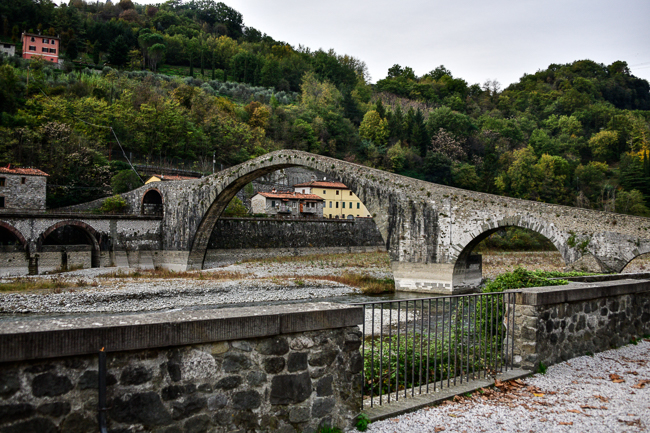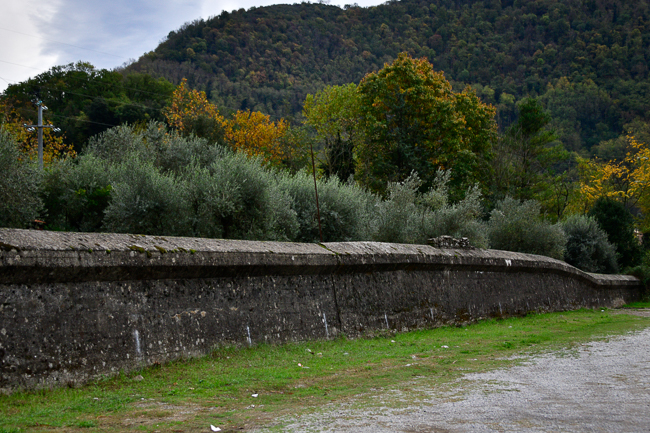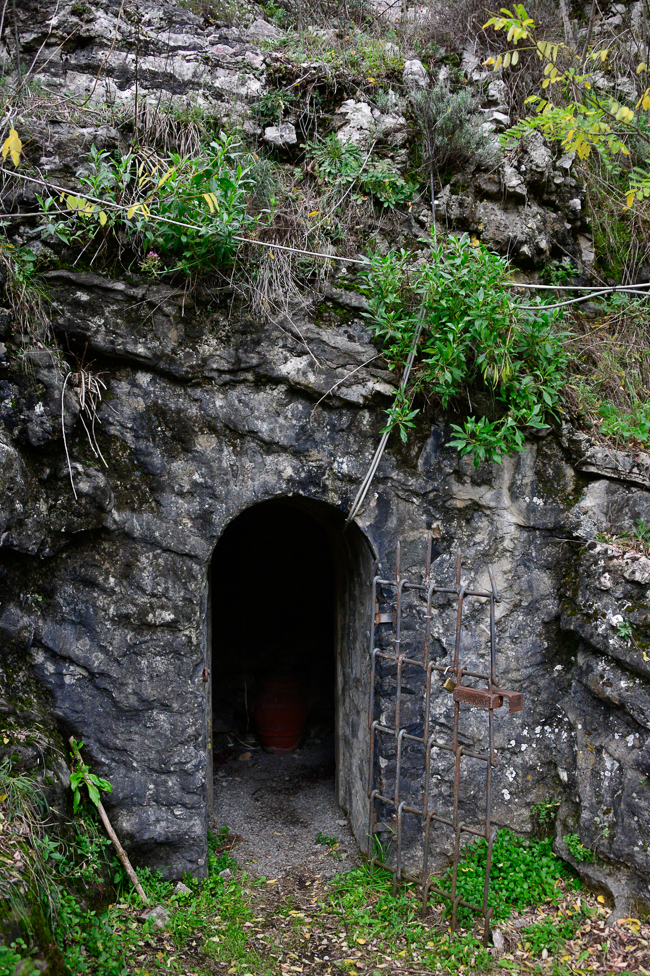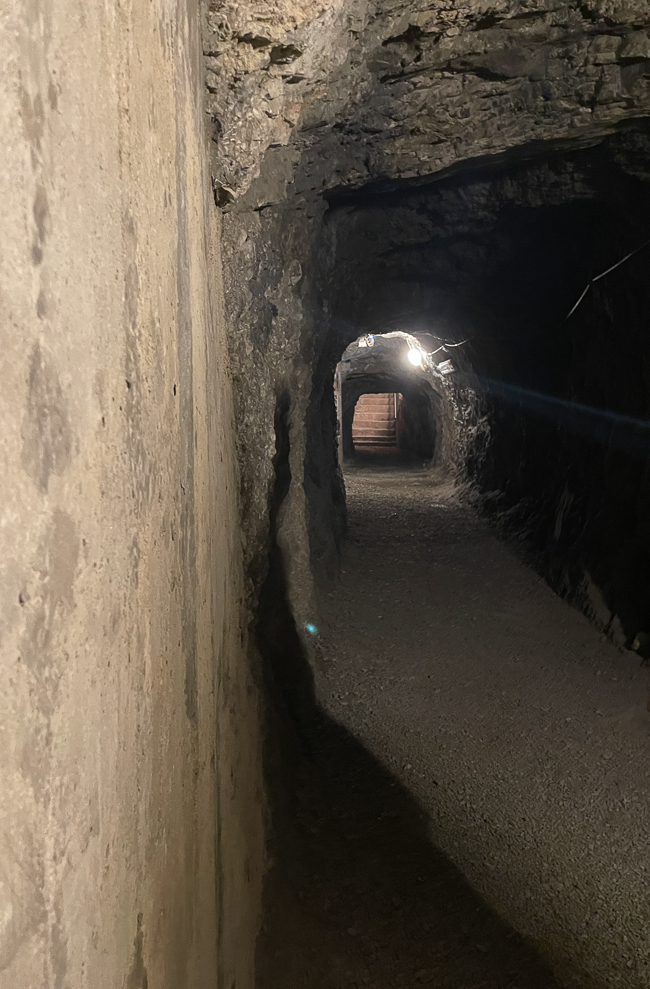November, 2022
Bagni di Lucca is a respite and a divine little spot to unwind. The area has been known for its thermal springs since the Etruscan and Roman Times. It was first mentiond in an official document of 983 AD as “Corsena”, with reference to a donation by the Bishop Teudogrimo of the territory of Bagni di Lucca to Fraolmo of Corvaresi.
The Roman poet Virgil wrote that the area was rich in chestnut forests as it still is today.
San Cassiano
The pieve (rural parish church) of San Cassiano was built before 722. It has the painting St. Martin Riding by Jacopo della Quercia and others from the Renaissance. Sadly, it was closed up tight so I could not see the paintings.
The majority of scholars believe that the church we see today dates between the end of the eleventh and the beginning of the twelfth century.
Scholars use this ceramic basin inserted in the facade to help date the building. Due to others like this found in the Pisana and Lucchese areas, it is thought to come from the 11th or 12th century and is from an Islamic country.

Above the portal are three human figures. According to scholars, the theme would be taken from Exodus 17.8-16.
Lucchio
When driving to Bagni di Lucca this town popped into view for just a few minutes, it appeared abandoned and the first thing I wondered is why is it there and more importantly how?
The next day we went searching for the town of Lucchio which sits just about 1/2 mile above sea level. The road to get there is hair raising and yet the ride is absolutely beautiful. I drove the entire thing at no more than 10 miles an hour. While the road is one-way I was told the town was deserted so I did not expect any traffic and did not encounter any.
However, when we got to the top, the town is not abandoned and a tooting horn arrived announcing the bread delivery. I was so glad I had been misinformed, as I know it would have been white-knuckle driving if I thought I might encounter another car on a road with steep banks, no turnouts, and very little way to see around every hairpin corner.
It is an ancient legend that Lucchio is so steeply sloping that it is said that farmers tied baskets on the back of their hens to keep the eggs from falling into the void.
Ponte della Maddalena
Ponte della Maddalena crosses the Serchio river near the town of Borgo a Mozzano in the province of Lucca.
There is little historical information about the building of the bridge. Nicolau Tegrimi, in his biography of Castruccio Castracani, attributes the bridge to Countess Matilde di Canossa of Florence (1046-1125) and mentions a restoration made by Castruccio Castracani (1281-1328.) According to the hypothesis of Massimo Betti, during the Castruccio government, the minor arches were constructed in stone, replacing the previous structure in wood. This would explain the difference between the major arch and the minor ones. The bridge is also described in a 14th-century novella by Giovanni Sercambi of Lucca.
The bridge is a remarkable example of medieval engineering, and while built in the typical medieval hunchback form it is unique in that its arches are asymmetrical and the height of the center one defies gravity.
Sometime around 1500, the bridge took on the name of Ponte della Maddalena, from an oratory dedicated to Mary Magdalene, whose statue stood at the foot of the bridge on the eastern bank.
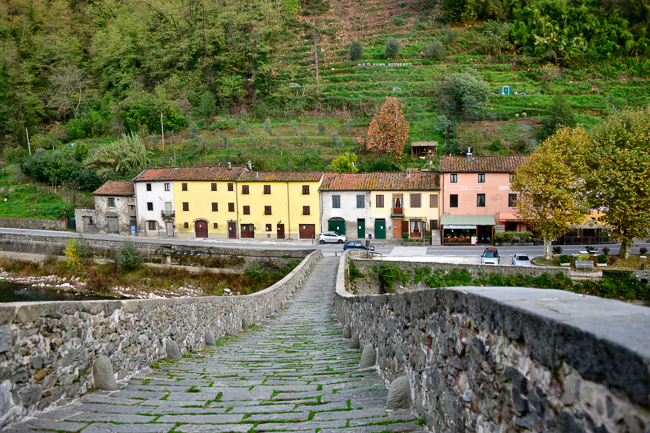 In 1670 the General Council of the Republic of Lucca issued a decree prohibiting passage over the bridge with millstones and sacks of flour in order to preserve the structure. Having walked to the top of the arch I can assure you it is steep with very uneven large stones as paving, I commented I would not have wanted to do it with a cart or even a shod horse, so I have no idea how people crossed with millstones.
In 1670 the General Council of the Republic of Lucca issued a decree prohibiting passage over the bridge with millstones and sacks of flour in order to preserve the structure. Having walked to the top of the arch I can assure you it is steep with very uneven large stones as paving, I commented I would not have wanted to do it with a cart or even a shod horse, so I have no idea how people crossed with millstones.
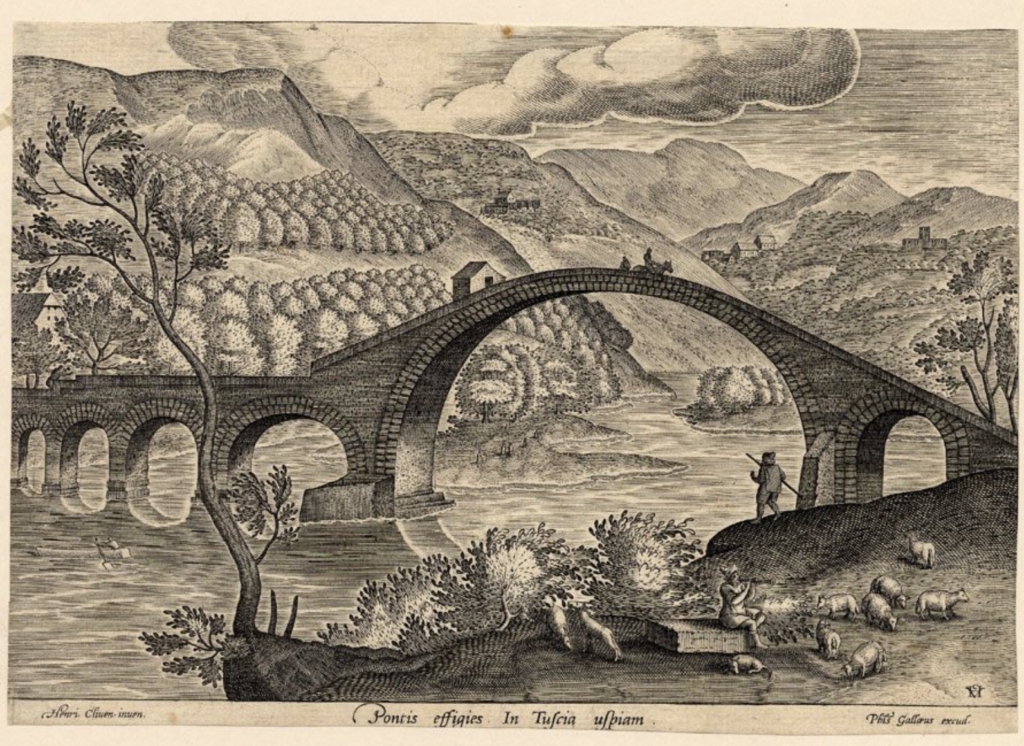 The profile must have been even more impressive before a dam was built, in the years after the Second World War.
The profile must have been even more impressive before a dam was built, in the years after the Second World War.
The bridge is also called the Devil’s Bridge. According to legend when the master builder realized he could not possibly complete this complex bridge by the proposed deadline, the Devil appeared to him offering a bargain: its completion in exchange for the soul of the first one who would cross it. The man accepted and that night the Devil lifted the bridge span with his pitchfork. Full of regret, however, the master builder confessed what he had done to a local priest, who proposed that a pig, not a man, be the first to cross over. When this was done, the Devil appeared once again, but – realizing he had been fooled – he threw himself off the bridge into the river and disappeared forever from this land.
The bridge was very near the Gothic Line during World War II. Apparently, the Nazis had decided to mine the Bridge but did not destroy it, for reasons unknown. Most likely because it was of absolutely no military use due to its narrowness.
The Gothic Line was a German defensive line during the Italian Campaign of World War II. It formed a line of defense along the summits of the northern part of the Apennine Mountains.
Using more than 15,000 slave laborers, the Germans created more than 2,000 well-fortified machine gun nests, casemates, bunkers, observation posts, and artillery fighting positions to repel any attempt to breach the Gothic Line
We were trying to find the gothic line and stopped at a map along the road near a hot dog stand. As we were trying to suss out the location on a map a volunteer stopped by, he helps maintain the line and educate people about what happened there so long ago. We were honored to have him take us into the bunker. He explained that over the years these were filled with trash and many people had hoped to forget all about them. A volunteer organization was formed in the 1990s to make sure that what happened in this part of Italy was not forgotten.
During the Italian Social Republic (a puppet state of Germany which existed from September 1943 until May 1945) a concentration camp for Jews was set up in Bagni di Lucca, where both Italian and foreign Jews were interned from December 1943 to January 1944. More than 100 people were interned in squalid conditions in the Hotel Le Terme far up in the hills. Some managed to escape, but most were sent to Auschwitz on January 30th, 1944.
